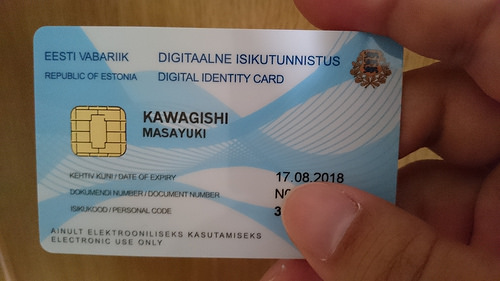日本文が後ろに続きます。
I ordered to purchase MacBook Pro at Apple Store Japan for my new computer. I’ve kept a desktop PC running Windows XP for my personal use on a daily basis for almost eight years, but it’s being unstable these days due to low memory and hardware troubles occuring from time to time, so I needed a new computer.
Actually, I used to have Powerbook running Mac OS 9 ten years ago. As Windows was being dominant for the business field, it was more convenient to use a Windows PC rather than a Macintosh for sharing data in the office with my house. However, security is now being so big concerns of office workers that most companies don’t let workers take data out of the office rooms. I no longer have an opportunity to see or edit at home any documents I use in the office, so I no longer have to use Windows to see them created by Windows PCs at office.
It was also an option to wait for a new PC with Windows 7 to be released this month. But, if you buy a Mac as well as an HP printer at the same time at Apple Store Japan, you have a great deal of discount. That’s why I chose Mac this time, because my printer in my room was out of order as well.
I want to use a computer, PC or Mac, with a US keyboard, because it’s easier for me to type texts with a keyboard of a US layout. In the past, IBM Japan released ThinkPad laptops with a US keyboard and English version Windows OS installed, but after Lenovo acquired IBM, there’s been no such PCs for sale any longer. If you live in Japan and want to have a US-keyboard PC, you’ll have to get an imported PC by accessing online or by going to a special PC store at Akihabara selling foreign PCs. However, one of the main problems with using an imported PC is that its wireless capabilities are not available within Japan because of a Japanese law issue. To activate wireless LAN or Bluetooth connections of a PC or a cell phone within Japan, the device must be certified by Japan’s national inspection facility. Because most PCs sold outside Japan are not certified, it’s forbidden to use the wireless functions of such PCs. (Of course it’s possible to use those functions in secret, but you must remember it’s ILLEGAL!)
Macintosh these days has an option to be customized so that it has a US keyboard, no matter where you buy it. Plus, Mac OS X has a multilingual option so you can choose any language to display menus or input texts. It’s much easier to display English menus and input Japanese text at the same time.
That’s why I bought a MacBook Pro.
Although it was said, when I used Powerbook ten years ago, that Macintosh stood for “Machine Always Crashes, If Not, The Operating System Hangs,” the new MacBook Pro I’m using now is very stable. Wireless connection is very good. Key strokes are not bad. The only thing I have to keep in mind is to get used to the “Macintosh rules” —- to click, when you close a window, on its top left red button instead of clicking on the X button on the top right corner; to hit a [command] key and a space bar at the same time to begin Japanese input instead of hitting [Alt]+[`] keys; to select a menu on the top side of the screen windows, not under the title bar of the active window; etc. I’m still embarrassed by those differences because I haven’t been in touch with Macintosh for almost ten years, but I’m sure I’ll get accustomed with it. Anyway, my computer life is now much more fun!
MacBook Proを買いました。
今までWindows XPの自作PCを8年近く使ってきたんですが、寄る年波に勝てず不安定になってきたようで、そろそろ新しいパソコンがほしいな〜と思っていたところです。
実は10年ぐらい前にMacOS9が動いていたPowerbookを使っていたことがあったんですが、だんだんビジネスの分野でWindowsが支配的になってくるにつれ、家で仕事をするのにWindows PCのほうが便利になってきたんですが、最近セキュリティがやかましくなって会社のデータを家に持ち帰れなくなっているので、わざわざ会社に合わせて家でもWindowsにする必要もなくなってきたわけです。
今月発売のWindows7を待つという手もあったんですが、今アップルストアでMacを買って、一緒にHPのプリンタを買うとプリンタが値引きになるということもあり、プリンタも壊れていた今はMacかな、と。
私はパソコンを使うときはUSキーボードのものが打ちやすいので、これまでずっとUSキーボードを使ってきました。前はIBMのThinkPadに英語OS、英語キーボードのモデルがあったんですが、レノボになってから英語版のPCが出なくなったので、日本にいながら英語版PCを入手しようとしたら、ネット通販か秋葉原に行って輸入PCを買うしかないわけなんですが、ここで問題があって、日本国内で無線LANやBluetoothを使おうとすると、国の技術基準適合証明を取らなければなりません。輸入PCが日本の技適など取っているとは思えませんから、輸入PCは日本で無線機能が使えないということになります(黙って使ってもいいんですが、一応違法行為になりますから。。。)。
ということで、MacBook Proを買いました。
10年前にPowerbookを使っていた頃は、Macといえばすぐ落ちるで有名だったんですが、今使ってる新しいMacBook Proは非常に安定しています。無線通信もGOOD。キータッチも悪くありません。1つだけ気にかけるのは、いわゆる「Macの流儀」に慣れること—-ウインドウを閉じるときは右上のバッテンではなく左上の赤丸ボタンをクリックするとか、日本語入力に切り替えるときはAlt+`ではなくCommand+スペースを押すとか、メニューは画面の上から選ぶとか。10年Macとごぶさただとまだごっちゃになったりしますが、まあすぐ慣れることでしょう。ともあれ、私のコンピュータライフは格段に楽しくなりました!


